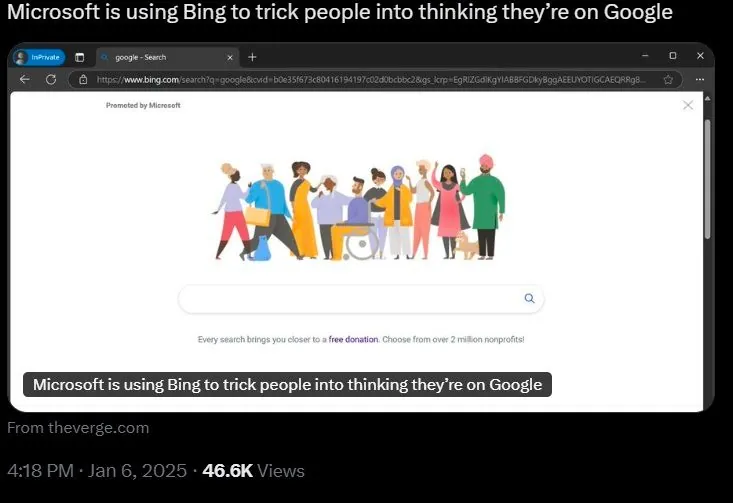Microsoft’s recent redesign of its Bing search engine has sparked controversy, as the update closely resembles the layout and aesthetic of its competitor, Google. The changes appear to have been made to entice users to stay with Bing, but Google has criticized the move, calling it a deliberate attempt to mislead users.

According to recent data, Bing, while widely used, still lags far behind Google in terms of market share. In January 2024, Bing was used by just over 10% of internet users globally, while Google dominated with nearly 82%. Despite this, Microsoft has sought new ways to encourage users to continue using Bing, and its recent interface overhaul seems to be part of this effort.
The new design features a search box prominently displayed on the page, along with a playful cartoon-like drawing positioned above it, a visual element reminiscent of Google’s famous “doodles.” When using Microsoft’s Edge browser and typing “Google” in the address bar, users are presented with a Bing results page that mimics the familiar layout of Google’s homepage.
However, this redesign goes further than just a visual homage. According to reports from Der Spiegel and The Verge, the browser subtly scrolls down when a user conducts a search, effectively hiding the Bing logo and other distinguishing design elements. As a result, users are left with a search box that looks strikingly similar to Google’s iconic homepage.
The move has not gone unnoticed by Google, which has publicly criticized Microsoft’s actions. Paris Tabriz, head of Chrome at Google, expressed her disapproval on the social media platform X. She stated that while imitation may be flattery, Microsoft’s decision to mimic Google’s design is part of a broader pattern of tactics aimed at confusing users and limiting their choices.
Microsoft’s strategy could be seen as an attempt to leverage Google’s design and appeal to users who may be more familiar with the Google interface, thereby increasing Bing’s user base. However, this move has drawn backlash from industry experts who argue that it raises questions about user trust and the ethics of such design strategies.




















